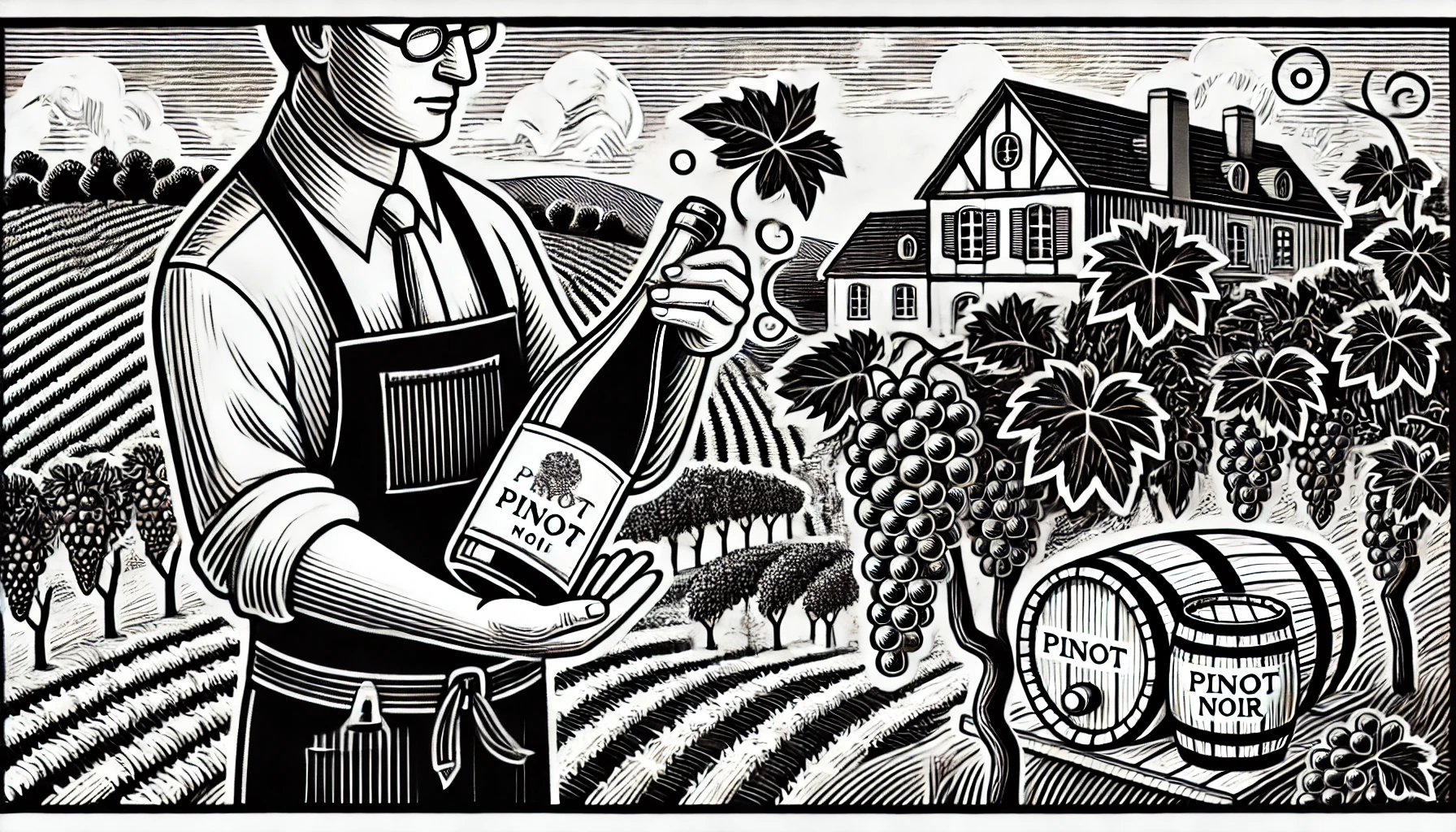
Pinot Noir is a red grape variety celebrated for its elegance, complexity, and versatility. Originating from the Burgundy region of France, Pinot Noir has gained acclaim worldwide. It is thriving in cooler climates such as Oregon’s Willamette Valley, New Zealand’s Central Otago, and parts of California like Sonoma and the Santa Lucia Highlands.
The grape is thin-skinned and sensitive to environmental factors, making it notoriously challenging to cultivate. Pinot Noir requires a long, cool growing season to develop its delicate flavors without accumulating excessive sugars. When grown under optimal conditions, it produces wines of remarkable depth and nuance. The wines are typically light to medium-bodied with soft tannins and bright acidity.
Flavor profiles of Pinot Noir often include red fruit notes like cherry, raspberry, and strawberry. Earthy undertones of mushroom, forest floor, and truffle add complexity, while floral hints of rose and violet may also be present. Aging in oak barrels introduces subtle touches of vanilla, spice, and smoke, enhancing the wine’s aromatic profile without overpowering its inherent delicacy.
Pinot Noir’s lighter body and refined tannins make it exceptionally food-friendly. It pairs well with a wide range of dishes, including poultry, pork, duck, lamb, and recipes featuring mushrooms or earthy herbs. Its acidity and delicate flavors complement rather than overpower food, making it a favorite choice for pairing with Thanksgiving turkey, salmon, or vegetarian dishes.
Pinot Noir in Burgundy
In Burgundy, Pinot Noir is the sole red grape permitted. Also, the wines are classified based on the vineyard’s quality, from regional appellations to Grand Cru sites. These wines are highly sought after and can command premium prices. New World expressions of Pinot Noir, such as those from California and New Zealand, often showcase riper fruit flavors and a more approachable style, reflecting the warmer climates and different winemaking techniques.
Winemakers often employ gentle handling to preserve Pinot Noir’s delicate nature. Fermentation may occur in small open-top fermenters, and some use whole-cluster fermentation to enhance complexity and structure. The wine’s sensitivity to terroir allows it to reflect the unique characteristics of its growing region. This is offering a diverse array of styles and expressions.
Pinot Noir’s allure lies in its subtlety and elegance. Its ability to convey a sense of place, combined with a harmonious balance of fruit, acidity, and tannin, continues to captivate wine enthusiasts and connoisseurs around the globe. Despite its cultivation challenges, the reward of producing a exceptional Pinot Noir inspires winemakers to pursue perfection with this noble grape.
Curious about more wine terms and insights? Visit our Wine Wiki section and explore the basic wine terms for expert definitions and tips!